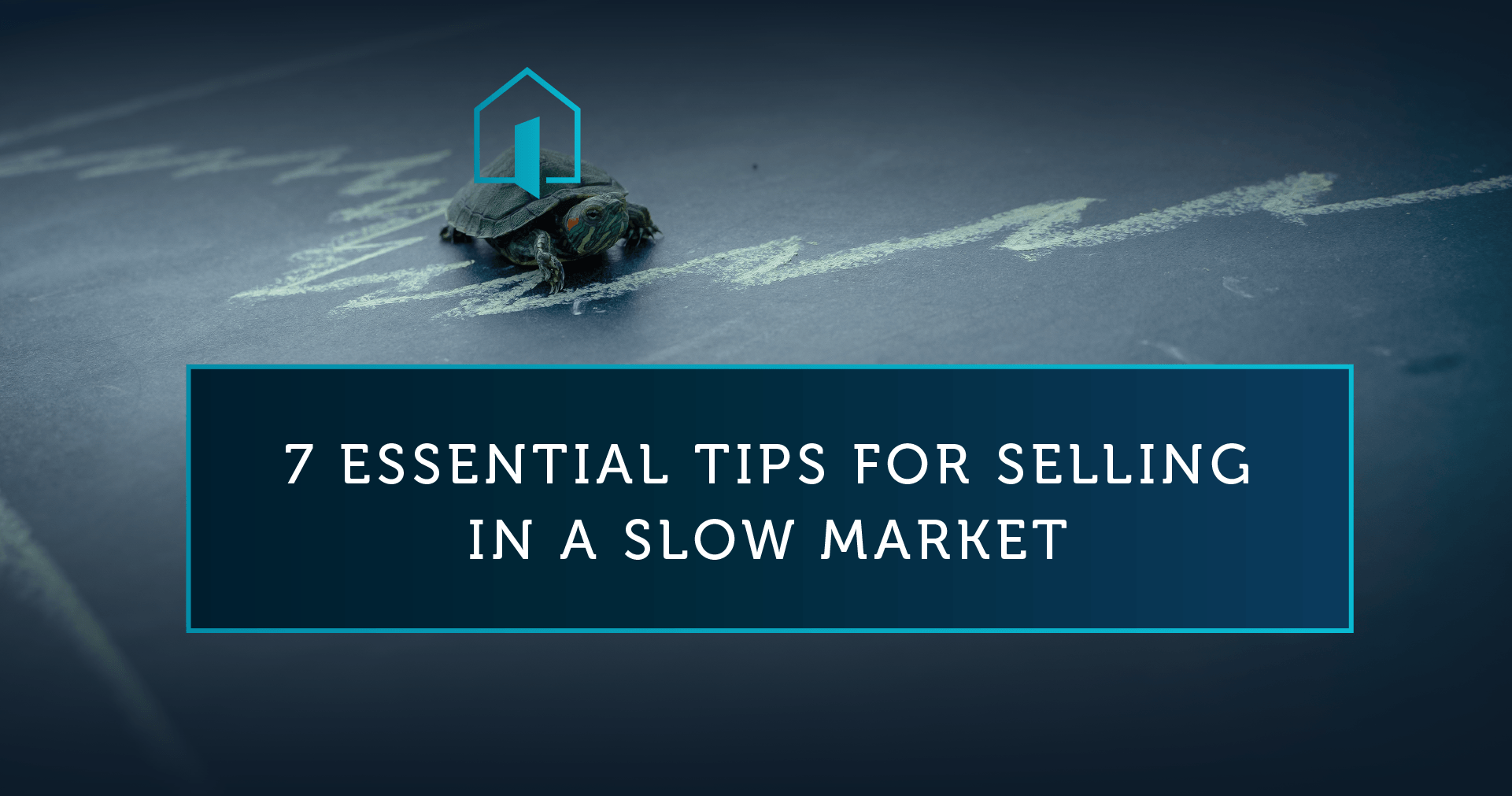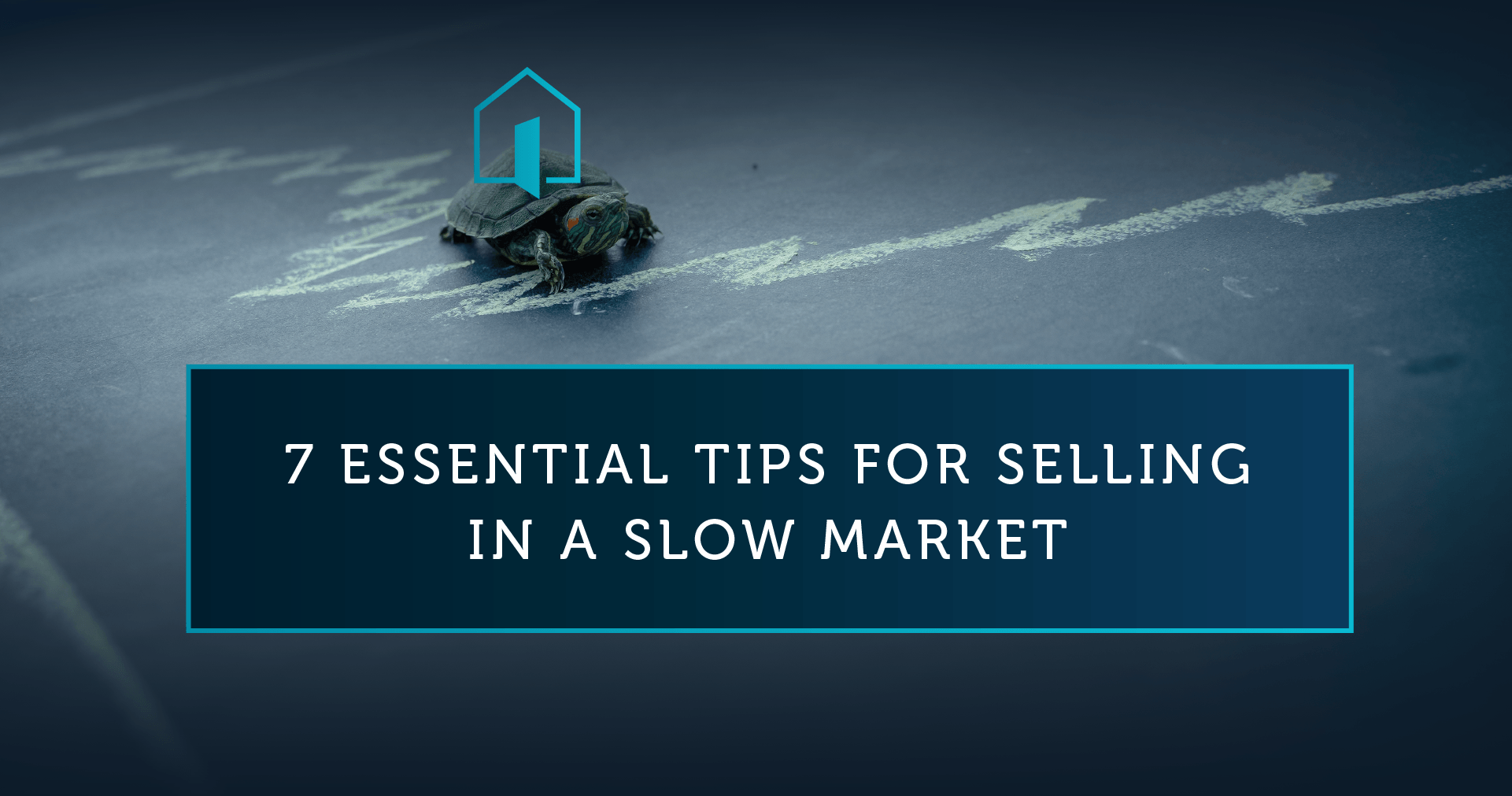7 ESSENTIAL TIPS FOR SELLING IN A SLOW MARKET

The property market has had an astounding run over the last few years, but the rise in interest rates, leading to an increase in stock on the market, combined with more hesitant buyers has certainly put the brakes on to some extent, making selling more of a challenge.
OK, so rising inflation, higher interest rates, and the resultant impact on the property market is well outside of our control.
So, let’s take a look at what can be controlled if you do decide to sell…
1. Prepare your property adequately for sale
It’s tempting to skip over any investment in property presentation to save costs and get your property onto the market as soon as possible, but this would be a false economy. In fact, it could be one of the biggest mistakes you could make and is likely to cost you far more in your final selling price than you would have spent in prepping.
It’s always important to clean, fix up, declutter, and style your home for selling, no matter what type of market you are facing, but in a buyer’s market it’s going to be essential to elevate the desirability of your property versus the competition.
If you have a limited budget, here are the most important things to focus on:
Externally:
- Make sure your gutters and drains are clear, your windows are clean, your pathway and entrance porch is clean and free from clutter, removing all dirt, grime and cobwebs.
- Freshen up the paintwork on fascia boards, window surrounds and your front door.
- Tidy up trees, shrubs, hedges, clear any leaves, and remove weeds. Installing fresh mulch can work wonders to make your garden look fresh and well-maintained.
- Keep the grass neatly cut.
- If you have a car port, empty it of clutter.
Internally:
- Declutter – probably the most important thing you can do. We live with our ‘stuff’ every day and we simply don’t see it anymore. Fresh, buyers’ eyes will pick up on all these details we overlook, and the overwhelming subliminal message will be that your property is too small or there is too little storage.
- Ensure carpets are cleaned, or replaced, if they are beyond cleaning.
- Give your home a deep clean – or engage professional cleaners if you have the budget.
- Fix all those little issues you’ve learned to live with – the cupboard door that won’t close, the broken light switch, the missing kickboard in your kitchen, for example. If buyers find these things, they’ll wonder what other elements of disrepair they might discover post-sale.
- Give the place a coat of paint, which will immediately make the property look fresher and brighter. Stick to neutral colours, which will not only make the place look bigger and reflect natural light but will allow your prospective buyers to better visualise your property as their own and envision themselves living there.
- Finally, if you have the budget, engage a stylist to really maximise the appeal of your property. This investment almost always pays for itself many times over in the final sale price achieved, and the length of time on the market.
If you really can’t spare the budget for styling, be extra ruthless with your de-cluttering and keep your interiors as minimal as possible.
2. Get a fresh pair of eyes
Once you feel your property is in good shape, it’s a good idea to have your real estate agent walk through the property so they can pick up on anything you might have missed and remedy any outlying problems before you commence your campaign.
Familiarity with your property will cause you to naturally overlook certain things, so this process is a great way of ensuring you’re ticking all the prepping boxes.

3. Invest in professional photography
We can’t overstate this enough. Do not be tempted to take your own photos. Your property will first be viewed online and easily dismissed from buyers’ shortlists if it doesn’t look up to scratch. Stunning photos will attract more attention online, in press advertising, and at street level from your ‘FOR SALE’ sign board.
Professional photographers have the correct lighting, and equipment to present your property in its most favourable light.
4. Price accurately
You will probably interview a number of agents to get an idea of the current value of your property. But don’t just rely on agency information – do your own due diligence and research recent sales in your area to get a good feel for realistic values. Don’t be seduced by agents over-valuing to win the listing – this will only cause you pain down the track and extend the sale period significantly, creating the additional problem of a less than favourable digital footprint.
Conversely, you also need to look out for agents pricing too low to attract more buyers. This will only serve to fill open homes with buyers who have no ability to match your asking price.
Remember, in a slow market, buyers will not be expecting to pay much over the guide price, and may well be looking to negotiate the price down. Pricing accurately will attract the right buyers, and in our experience, correctly priced properties will sell in any market.
5. Select your agent based on their sound pricing advice and sale strategy
Getting the marketing balance right is quite an art. Some agents will have you spending thousands of dollars on slick campaigns that achieve very little. Scrutinise proposed marketing plans and ask lots of questions. Some agents (ourselves included) may back their service by charging zero up-front fees, so the money you save on marketing can be used for prepping your home and engaging that professional photographer.
If that sounds like a smart solution to you, call us to find out more about our unique SMART SALE methodology.
And check out our article on “How Agency Selection can Make or Break a Successful Sale” to help you establish the right selection criteria and find out the questions you need to be asking.

6. Adopt an open “open for inspection” strategy
Gain the edge over competitor vendors by allowing access by appointment at times that suit your buyers. By all means, schedule the usual open homes, but if your prospective buyers can’t make the scheduled times, or miss getting there in the narrow ‘open’ windows, make sure your agent is open to offering private viewings.
7. Be smart with your negotiations
In a slow market, buyers are more likely to be picky and may demand a list of repairs based on the inspection report or could be looking for inclusion of certain fixtures and fittings.
Take advice from your agent, but stubborn rejection of these requests could lead to a good buyer walking away. And remember, the cost of re-listing and having your property potentially sitting on the market for months will greatly outweigh the cost of accommodating your buyer’s requests.
In Summary
Essentially, all the usual research and preparations required to sell a property in any market applies in a slowing market, but the attention you pay to each of these is brought more acutely into focus and will have a bigger impact on the success of your sale.
Getting the balance right between your costs and the benefits of all theses elements is essential. Any agent can sell just about any property in a hot market, but finding the right agent, with a sound strategy and pragmatic advice to help you achieve the right cost/benefit balance and attract the most suitable buyers will be critical in a buyer’s market.
For more details of what sells a home, check out our recent article!



